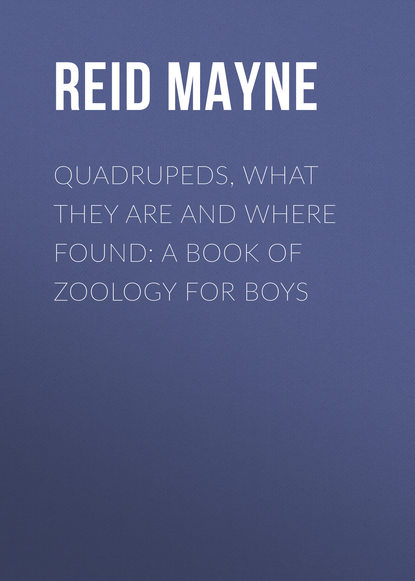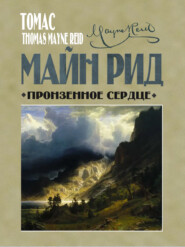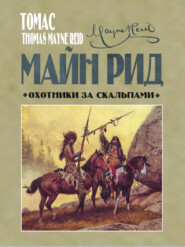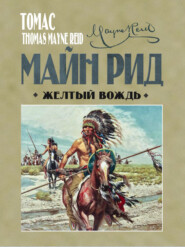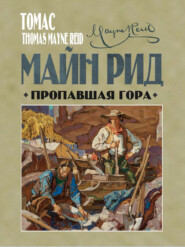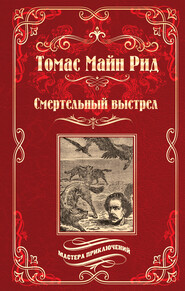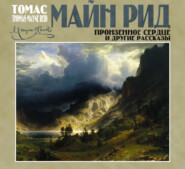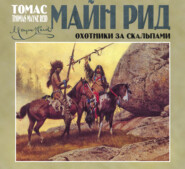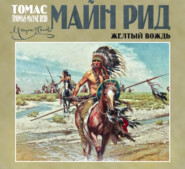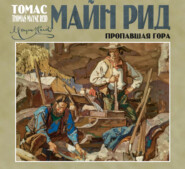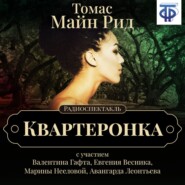По всем вопросам обращайтесь на: info@litportal.ru
(©) 2003-2024.
✖
Quadrupeds, What They Are and Where Found: A Book of Zoology for Boys
Настройки чтения
Размер шрифта
Высота строк
Поля
As the Brown bear is the oldest of the family known to naturalists, I shall give him the precedence in this little monograph.
It is a misnomer to call him the brown bear of Europe, since he is even more common in many parts of Asia – especially throughout Asiatic Russia and Kamtschatka. But he is also met with in most European countries, where there are extensive ranges of mountains. In the mountains of Hungary and Transylvania – as well as in those of Russia, Sweden, and Norway – the brown bear is found. He is also met with as far south as the Alps – and even the Pyrenees, and Asturias, mountains of Spain; but the bear of these last-mentioned localities differs considerably from the real brown bear of the northern regions; and most probably is a different species.
Again, in North America – in a very remote and sterile region lying to the westward of Hudson’s Bay, and known as the Barren Grounds – a large brown bear has been observed by travellers and traders of the Fur Company, supposed to be identical with the European bear. This, however, is a doubtful point; and in all likelihood the bear of the Barren Grounds is a new species, only found in that desolate region.
The brown bear is of solitary habits. During the summer season he roams about, growing fat upon roots, fruits, seeds, and wild honey – when he can procure it. At the approach of winter this animal has the singular habit of returning to his den, and there remaining dormant or torpid throughout the season of cold. During this prolonged slumber he takes no sustenance of any kind; and although exceedingly fat when going to rest, he comes forth in the spring-time as thin as a skeleton. The den is usually a cave or hollow tree; or, failing this, a lair, which the animal constructs for himself out of branches, lining it snugly with leaves and moss.
The brown bear is a long-lived animal. Individuals have been known of the age of fifty years. The cubs when first born are not much larger than the puppies of a mastiff. The people of Kamtschatka hunt this species with great assiduity, and obtain from it many of the comforts and necessaries of life. The skins are used for their beds and coverlets, for their caps, gloves, and boots. They manufacture from it harness for their dogs. From the intestines they make masks for their faces, to protect them from the glare of the sun; and they also use the latter stretched over their windows as a substitute for glass. The flesh and fat are among the most esteemed dainties of a Kamtschatkan cuisine. Even the shoulder-blades are used as sickles for cutting grass. The Laplanders, also – of whose cold country the brown bear is an inhabitant – have a great esteem for this animal. They regard its prowess as something wonderful, alleging that it has the strength of ten men, and the sense of twelve! The name for it, in their language, signifies the dog of God.
The White, or Polar bear, is, perhaps, the most interesting of the whole family: not so much on account of his superior size – since the brown and the grizzly are sometimes as large as he – but rather from his singular habits, and the many odd stories told about him, dining the last fifty years, by whalers and Arctic explorers.
To describe the appearance of the Polar bear would be superfluous. Everybody has seen either a living individual in a menagerie, or a stuffed skin of one in a museum; and the long, low, tail-less body – with outstretched neck and sharp projecting snout – covered with a thick coat of white hair, renders it impossible to mistake the Polar bear for any other animal.
This quadruped is more of a sea than land animal. Sometimes, it is true, he wanders inland for fifty miles or so; but this he does in following the course of some river or marshy inlet, where he finds fish. His usual haunts are along the icy shores of the Arctic Ocean, and the numerous ice-bound islands of the great Polar Sea. There he roams about over the frozen banks, or floats upon icebergs and drifts; or, if need be, takes to the open water, where he can swim with almost the facility of a fish.
A proof of his natatory powers is found in the fact that Arctic voyagers have observed him swimming about in the open sea full twenty miles from the nearest land! He is equally expert as a diver; and uses this art for the purpose of capturing various kinds of marine animals, upon which he subsists. In regard to food, the Polar bear differs altogether from his congeners. He is almost wholly carnivorous in his habits. Indeed, were it otherwise, he could not exist in his icy kingdom – in many parts of which not a trace of vegetation is to be found. Fish of many kinds, birds, and their eggs, and four-footed beasts – when he can lay his claws upon them – all are welcome to his palate. Nor will he disdain to feast upon the carcass of the great whale – when chance, or the whale fishermen, leaves such a provender in his way. The seal is a particular favourite with him, and he hunts this creature with skill and assiduity. When he perceives the seal basking upon a ledge of ice, he slips quietly into the water, and swims to leeward of his intended victim. He approaches by frequent short dives – so calculating his distance, that at the last he comes up close to the spot where the seal is lying. Should the victim attempt to escape, by rolling into the water, it falls into the bear’s clutches: if, on the contrary, it lies still, the bear makes a powerful spring, seizes it on the ice, and then kills and devours it at his leisure.
In swimming, the Polar bear not only moves rapidly through the water, but is also capable of darting forward in such a way as to seize a fish before it can escape beyond reach. On the land, also, he can move with rapidity – his slouching trot being almost as fast as the gallop of a horse.
Individuals have been shot that weighed as much as 1600 pounds!
Polar bears are found along the shores of the Arctic Ocean, both in Asia and America. They do not go to sleep in winter – that is, the males do not. The females with young, however, bury themselves in the snow – having formed a lair – and there remain until they bring forth their young. The cubs are often captured in these snow caves, which the Esquimaux discover by means of dogs trained for this peculiar purpose.
The Grizzly bear next merits attention. This formidable animal was, for a long time, supposed to be a variety either of the brown bear of Europe or the black bear of America; but his greater ferocity, so often and fatally experienced by travellers, drew the attention of naturalists upon him, when it was discovered that he was altogether distinct from either of the two. His name is usually coupled with that of the Rocky Mountains of America – for it is chiefly in the defiles and valleys of this stupendous chain that he makes his home. He wanders, however, far eastward over the prairies, and also to the Californian Mountains on the west; and in a latitudinal direction from the borders of Texas on the south, northward as far, it is supposed, as the shores of the Arctic Sea. At all events, a bear somewhat like him, if not identically the same, has been seen on the banks of the great Mackenzie River, near its mouth. Perhaps it may be the brown bear of the Barren Grounds, already noticed; and which last is, in many respects – in size and colour especially – very similar to the grizzly.
The grizzly bear is certainly the most ferocious of his tribe – even exceeding, in this unamiable quality, his white cousin of the icy north; and many a melancholy tale of trapper and Indian hunter attests his dangerous prowess. He is both carnivorous and frugivorous – will dig for roots and eat fruits when within his reach; but not being a tree-climber, he has to content himself with such berries as grow upon the humbler bushes. Indeed, it is a fortunate circumstance that the fierce animal is unable to ascend a tree. Many a traveller and hunter have found a neighbouring tree the readiest means of saving their lives, when pursued by this ferocious assailant. Another circumstance is also in favour of those pursued by the grizzly bear. In the region where he dwells, but few persons ever go afoot; and although the bear can overtake a pedestrian, his speed is no match for that of the friendly horse.
It is almost hopeless to think of killing a grizzly bear by a single bullet. There the deadly rifle is no longer deadly – unless when the shot is given in a mortal part; and to take sure aim from the saddle, with a horse dancing in affright, is a feat which even the most skilful marksman cannot always accomplish. As many as a dozen bullets have been fired into the body of a grizzly bear, without killing him outright.
The strength of this animal equals his ferocity. He pulls the huge buffalo, a thousand pounds in weight, to the ground; and then drags its carcass to some cave or crevice among the rocks, or to a hole which he has dug to receive it. To this place he repairs from time to time, till the exhausted store compels him to go in search of a new victim. Many an incident can be related – and on the best authority too – where man has been the victim of the grizzly bear; and the Indians esteem the killing of one of these animals a feat equal to that of taking the scalp of a human enemy. One of the proudest ornaments of a savage chief is a necklace of bears’ claws: only to be worn by those who have themselves killed the animals from which they have been taken.
The Black, or American bear, is one of the best known of the family; and on account of his clean smooth head, tapering muzzle, and rich black fur, he is also one of the best looking of bears. He is found throughout the whole of the United States territory – from the Canadas to the Gulf of Mexico – and westward to the shores of the Pacific. He is sometimes met with in the same neighbourhood with the grizzly, but not often: since their haunts are essentially unlike – the black bear being a denizen of the heavy-timbered forest, while the other frequents the grassy hills or coppice-openings of the prairies and mountain valleys.
The black bear is a tree-climber; and ascends the loftiest trees in search of the honey of the wild bees, or to make his lair in some cavernous hollow of the trunks. His food is usually fruits and roots, but he is also fond of young corn, and often commits serious depredations on the maize plantation. In the backwood settlements, where clearings are apart from each other, the black bear is still occasionally met with; and the chase of this animal is one of the most favourite pastimes of the backwoods’ hunter, whether amateur or professional. Generally there is little peril in the pursuit – unless when the bear is wounded and enraged, and the hunter chooses to risk himself at close quarters.
There are varieties in colour. Some with white throats, and some of a cinnamon brown, have been observed; but the colour of the species is usually jet black; and on this account the skins are much prized for military and other purposes.
The Spectacled bear is a native of South America, and frequents the forests upon the declivities of the Andes. This was long supposed to be a variety of the black bear, but later observations prove it to be a different species. Its habits are very similar to the last, to which it is also similar in shape. In colour it differs essentially. It is black, but with a buff snout, and buff rings round the eyes, which give it that appearance whence it derives its trivial name. Its throat and breast are whitish.
There is at least one other species of black bear indigenous to South America, inhabiting the tropical forests; but very little is known of it – further than that it is one of the smallest of the tribe.
We now reach the Asiatic bears, properly so called; and we have only space to say a word about each.
The Siberian bear is thought to be only a variety of the brown bear of Europe, differing slightly in colour. In the former there is a broad band, or collar, of white passing over the neck and meeting upon the breast. It is, as its name implies, an inhabitant of Siberia.
The Thibet bear is a dweller among the Himalayas – in Sylhet and Nepaul. Its general colour is black, with a white mark, shaped like the letter Y; so placed that the shank of the letter is upon its breast, and the forks running up the front of its shoulders. It is not carnivorous, and, generally, its disposition is harmless and playful. It is easily tamed.
The Sloth bear is another Indian species having this peculiar marking on the breast and shoulders. This animal is one of the oddest of creatures. Its short limbs and depressed head, with the long shaggy hair surmounting its back like a bullock, give it the appearance of being deformed. On this account it was the favourite of the Indian jugglers, who, depending on its ugliness as a source of attraction, trained it to a variety of tricks. It is therefore sometimes known as the jugglers’ bear (Ours jongleur). It has also a peculiar prehensile power in its lips; and this, with its general shaggy mien, led to the belief of its being a species of sloth – hence its common name.
The Malayan bear is another black species, with a marking on the breast. This mark is of a semi-lunar shape, and whitish; but the colour of the muzzle is buff-yellow. This is a very handsome species, subsisting on vegetable diet; and very injurious to the plantations of young cocoa trees, of the shoots of which it is very fond. It is also a honey eater; and roams about in quest of the hives of the indigenous bees. It is a native of Malacca, Sumatra, and others of the East Indian islands.
The Isabella bear is so called from its colour – being of that fulvous white known as Isabella colour. It is another of the species belonging to the great range of the Himalayas, and is found in the mountains of Nepaul. Sometimes it is observed of nearly a white colour; which led to the mistaken belief that Polar bears existed in the Himalayas.
The Syrian bear is a species found in the mountainous parts of Asia Minor. It is of a fulvous-brown colour, sometimes approaching to yellowish white. It is partly carnivorous, but feeds also on fruits; and is most remarkable as being the species first mentioned in books – that is, it is the bear of the Bible.
The Bornean bear is the last to be mentioned, though it is certainly one of the most beautiful, if not the most beautiful, of the genus. This beauty arises from its peculiar markings, especially from the large patch of rich orange colour upon the breast. It is a native of the great Island of Borneo, and little is known of its habits; but it is supposed to resemble the Malayan bear in these, as it does in many other respects.
In Africa there are no bears.
Chapter Four.
Badgers
The Badger is a silent, solitary, carnivorous creature, having his representative, in some form or other, in almost every part of the world; though nowhere either numerous in species or plentiful in individuals. In Europe he appears in two forms, the Glutton and common Badger; in North America in three, viz., Wolverene, American, and Mexican Badgers; and, indeed, we might say a fourth belongs to that continent, for the Racoon is as near being a badger, both in appearance and habits, as he is to being anything else. For convenience, therefore, let us class him in this group: he will certainly be more at home in it than among the bears– where most of the naturalists have placed him.
In South America we find another form of badger in the Coati mondi, of which there are several varieties; and there, too, the racoon appears of a species distinct from those of the north. Some writers class the coati with the civets, but the creature has far more of the habits and appearance of a badger than of a civet cat; and therefore, whatever the anatomists may say, we shall consider the coati a badger.
But a truer form of the badger than either of the above, exists in South America – extending over nearly the whole of that continent. This is the Grison, which, in appearance and habits, somewhat resembles the wolverene. It also is found in two or three varieties – according to the part of the country it inhabits. The Täira is another South American species of badger-like animal, though usually referred to the weasels.
In Africa, the badger appears in the Ratel, or honey badger, common from Senegal to the Cape. In Asia, in its northern zone, we have the European badger and Glutton; and in the south, the Indian badger; while in the Himalaya chain dwells another animal, closely allied to the badgers, called the Wha or Panda. In Java, we find still another species, the Nientek; and in the other large Asiatic islands there are several kinds of animals that approach very near to badgers in their forms and habits, but which are usually classed either with the weasels or civets.
We shall now give some details respecting the different animals of this family; among which the Glutton, in point of size, as well as for other reasons, deserves precedence.
The Glutton is the Rosomak of the Russians, in whose country he is chiefly found – along high northern latitudes, both in Europe and Asia. He is supposed to be identical with the wolverene of North America; and if this be so, his range extends all round the Arctic zone of the globe: since the wolverene is found throughout the whole extent of the Hudson’s Bay territory. There are good reasons to believe, however, that the two species differ considerably from each other – just as the European badger does from his American cousins. It was the writer Olaus Magnus who gave such celebrity to this animal, by telling a very great “story” about the creature – which, at a time when people were little studied in natural history, was readily believed. Olaus’s report was, that whenever the glutton killed an animal, he was in the habit of feeding on the carcass till his belly became swelled out and tight as a drum; that then he would pass between two trees growing close together – to press the swelling inwards and ease himself – after which he would return to the carcass, again fill himself, and then back again to the trees, and so on, till he had eaten every morsel of the dead animal, whatever might have been its size! All this, of course, was mere fable; but it is not without some foundation in fact: for the Rosomak is, in reality, one of the greatest gluttons among carnivorous animals. So, too, is his cousin, the wolverene of America; as the fur trappers have had sad reasons to know – whenever the creature has come upon a store of their provisions. The name of Glutton, therefore, though based upon Olaus Magnus’s exaggeration, is not so inappropriate.
The glutton and wolverene are, in fact, very like the common badger in their habits; except that being much larger and stronger animals, they prey upon larger game. The reindeer, and other large quadrupeds, are often the victims of both; and it is even said that they can overcome the great elk; but this is not confirmed by the observations of any trustworthy traveller. The young of the elk, or a disabled old one, may occasionally succumb to them, but not an elk in full vigour, nor yet a reindeer, except when they can surprise the latter asleep. Their game is usually the smaller quadrupeds; and in the fur countries no animal is a greater pest to the trapper than the wolverene or glutton. A single individual will in one night visit a whole line of traps, and rob them of the captured animals – whether they be polar hares, white or blue foxes, martens, or ermine weasels.
It is this creature that is usually represented lying in wait upon the limb of a tree, and springing upon deer as they pass underneath: but this story of its habits wants confirmation.
The fur of the wolverene is one of the staple articles of trade of the Hudson’s Bay Company; though it is more prized among the Russians than with us – who esteem it in value as next to the ermine.
The Common, or European badger, need not be here described, since it is familiar to all. The same may be said of the two American badgers, and also that of India, all three of which are very similar in habits and appearance to the common kind.
But the African badger, or Ratel, merits a word or two. It is about the size of the true badger, and ordinarily lives on small game, as badgers do; but, in addition to this, it is fond of varying its diet with a little honey. This it procures from the nests of wild bees, common throughout the whole of Africa. The account given of the mode in which it finds these nests would be incredible, were it not that we have the testimony of reverend missionaries to confirm it. It is as follows: – In Africa there is a bird – a species of cuckoo – known as the Indicator bird, or honey guide. This little creature hops from tree to tree, itself apparently in search of the bees’ nests. While doing so, it utters a shrill cry; and these cries are repeated until the honey hive is found. The ratel lies in wait for this bird; and, on hearing the cry, makes towards it, and keeps following its flights till the bees’ nest is found. Should this prove to be in a tree and out of reach – for the ratel is not a climber – the animal vents his chagrin by tearing at the trunk with his teeth, as if he had hopes of felling the tree. The scratches thus made on the bark serve as a guide to certain other creatures, who are also fond of honey, viz., the Kaffir hunters and Bushmen.
Should the bees’ nest prove to be on the ground, or under it, the ratel soon unearths the treasure with his strong claws, and takes possession of it, regardless of the stings of the bees, against which his thick skin defends him.
The Orison inhabits the forests of South America, from Guiana to Paraguay. It is quite as ferocious as any of the tribe; but its smaller size hinders it from attacking large animals, and its victims are birds, agoutis, and other small rodents – against all of which it wages a war of extermination. When surprised by the hunters and their dogs, it will battle furiously till life is extinct: all the while emitting a strong disagreeable smell, after the manner of the weasels and polecats. The Racoon, which we have grouped with the badgers, is both a North and South American animal; dwelling in dense forests, and making its lair in the hollow of a tree. This animal is a good tree-climber, and usually takes refuge among the higher branches when pursued. It is nocturnal in its habits, but in deep shady woods it may be seen prowling about in the daylight, in search of birds and their eggs, small rodents, fish, or frogs, all of which it eats indifferently. There are several distinct species.
The Coati is exclusively South American. This, unlike the racoon, sleeps at night, and prowls during the day. It is also an expert tree-climber, and has a peculiarity in this respect; viz., it descends a tree head foremost, which no other animal of its order can do. It is equally as fierce and carnivorous as any of the badgers; and its prey, as with the racoon, consists of birds, their eggs, and small quadrupeds. It feeds also upon insects; and will turn over the earth with its long proboscis-like snout. When drinking it laps like the dog. In eating, it uses its fore-paws to carry the food to its mouth, though not as squirrels and monkeys do. On the contrary, it first divides the flesh, or whatever it may be, into small morsels, and then raises these to its mouth by impaling them on its claws as on a fork!
It is not a solitary animal, but prefers the society of its companions, and usually goes about in troops or gangs. Its lair, like the racoon, is the hollow of a tree.
The Panda of the East Indies is an animal of very similar habits. It is found chiefly along the banks of streams that descend from the mountains; and subsists upon small quadrupeds and birds – which it is able to follow to the tops of the tallest trees. Its name of Qua, or Oua, or Wha, is derived from the cry which it utters, and repeats very often; and which is well represented by any of the syllables above written.
Chapter Five.
Weasels, Otters and Civets





